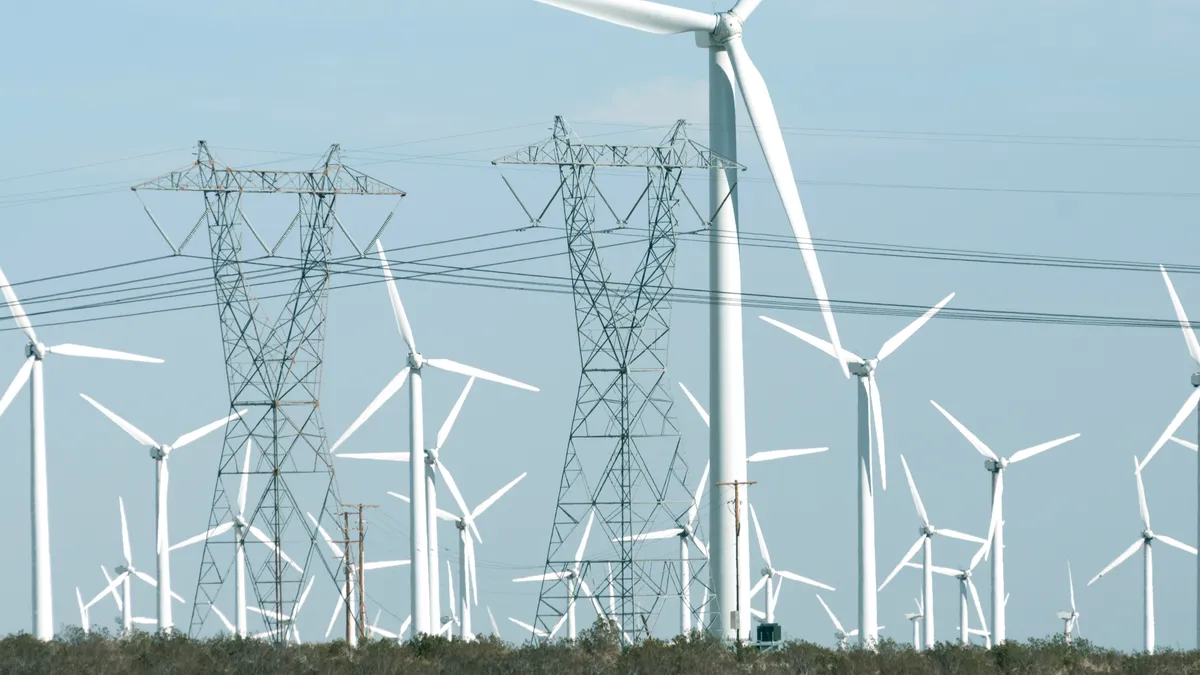Dive Brief:
-
Failing to expand the electric grid may be the biggest threat to the U.S. energy transition this decade, according to a report from the National Academies of Sciences, Engineering, and Medicine.
-
To meet decarbonization goals, the United States must expand its high-voltage interstate transmission grid in addition to modernizing local electricity distribution systems, deploying resources such as solar and storage close to customers and adopting significantly more aggressive energy efficiency measures, a committee of experts said in Accelerating Decarbonization in the United States, a report released Tuesday.
-
Among its recommendations, the National Academies urged the Federal Energy Regulatory Commission to “expeditiously” issue pending transmission planning and cost allocation reforms. It also urged FERC to ensure wholesale power markets in all parts of the U.S. can accommodate a shift to 100% clean energy.
Dive Insight:
The National Academies’ report provides a roadmap for the U.S. to reach its net-zero carbon emissions goals by 2050 while making sure all Americans benefit from an equitable energy transition.
It builds on a report issued in 2021 that helped shape policies included in the Infrastructure Investment and Jobs Act, the CHIPS and Science Act and the Inflation Reduction Act, the National Academies said.
“Recent energy and climate policies are revolutionary and unprecedented in both scale and scope, putting the U.S. on or close to a path to zero net emissions by mid-century,” Stephen Pacala, a Princeton University professor and chair of the committee that wrote the report, said in a statement. “With so much at stake, the main challenge now is effective implementation of these policies.”
The latest report found that a lack of transmission could impede the transition away from fossil-fueled power sources.
“Studies show that without significant new transmission capacity, renewables deployment would be delayed, just as electrification of transport and heating are starting to increase demands for power,” the report’s authors said. “The net result could be increased generation by fossil electricity plants and increased national fossil emissions during the 2020s, which would make the entire effort appear to be a failure.”
A lack of new transmission capacity would also “prolong and increase the environmental injustice of exposure to dangerous particulate emissions from fossil power plants,” according to the report.
The warning about the need to expand the grid echoes a key finding in a report released this week by the International Energy Agency.
The economic opportunities of a move to zero-emissions are driven by the plunging costs of clean energy technologies over the last decade, making them at least cost competitive with fossil fuel sources in most places, the report said.
“As a result, by the early to mid-2030s, the United States could rely on wind and solar electricity generation, together with existing hydro and nuclear assets, to supply at least 80 percent of the country’s electricity demand at inflation-adjusted retail costs similar to today,” the report said.
The cost of electric vehicles is also falling, likely making many light-duty models less expensive over the next five years than ones that burn fossil fuels, according to the report.
“Thus, within the same decade, the cheapest options for new equipment in two sectors responsible for approximately 70 percent of U.S. [carbon dioxide] emissions — power generation and motor vehicles — are switching from being fossil-fuel powered to non-emitting alternatives,” the report said.
However, the authors warned that “persistent non-technological challenges” — such as market structures tilted against renewable energy, clogged interconnection queues and policy uncertainty — could limit the rollout of technically feasible and increasingly economical clean-power technologies.
Some of the report’s recommendations include:
- Congress should set a cap on power sector carbon emissions or establish a clean electricity standard to reach roughly 75% clean electricity by 2030 and net-zero emissions by 2050;
- Congress should provide incentives for transmission companies to join regional transmission organizations or participate in other coordinated wholesale markets;
- Utility regulators should provide rate options to encourage flexible demand while making sure electricity is affordable;
- States, localities and tribal governments should support the equitable deployment of distributed resources; and
- Congress should direct FERC to consider whether proposed gas pipelines and liquefied natural gas projects are needed in light of the goal to slash carbon emissions.















